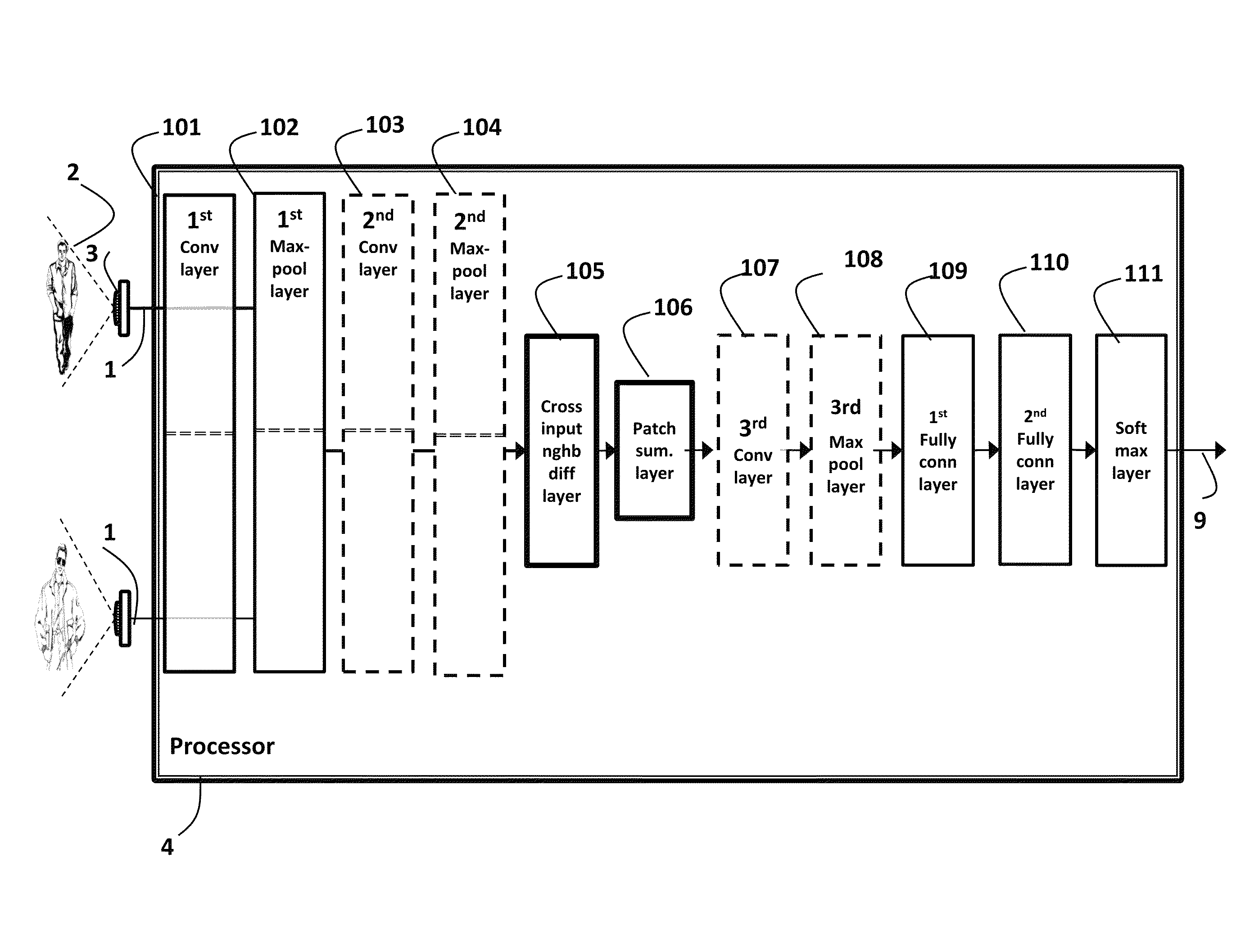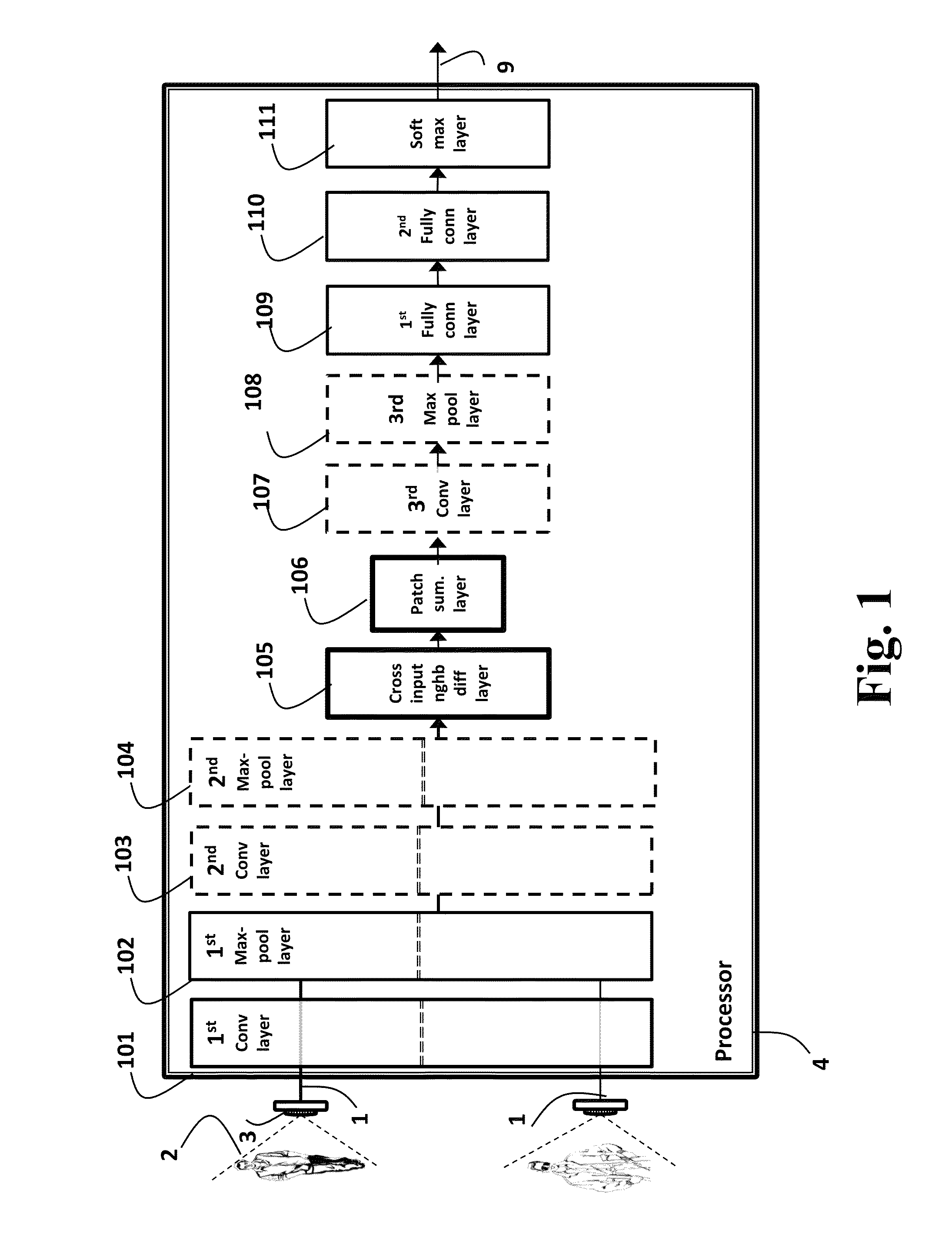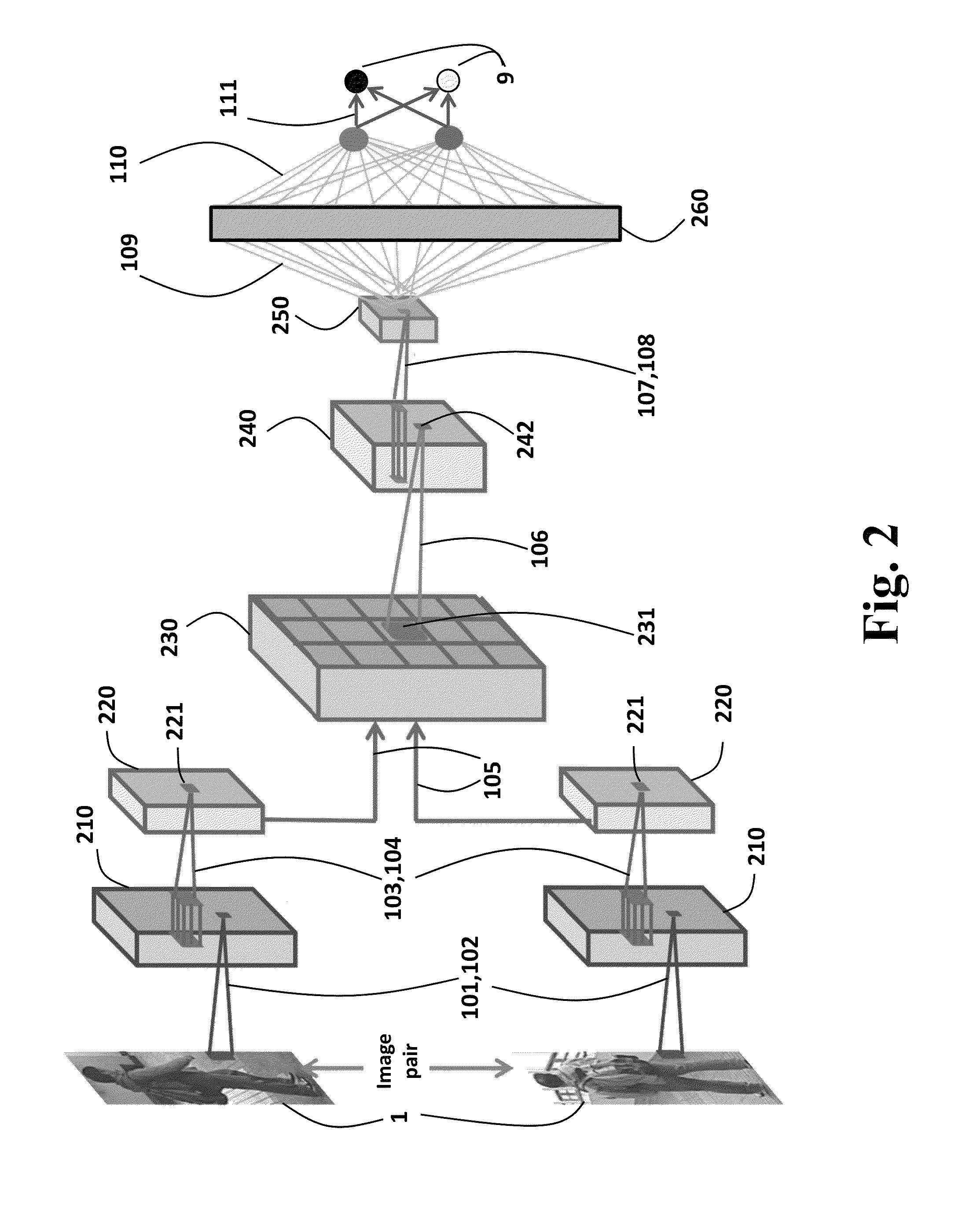Method for determining similarity of objects represented in images
a technology of similarity and image, applied in the field of computer vision and camera surveillance, can solve the problem that the method significantly outperforms the state of the art on larger data sets
- Summary
- Abstract
- Description
- Claims
- Application Information
AI Technical Summary
Benefits of technology
Problems solved by technology
Method used
Image
Examples
Embodiment Construction
[0022]As shown in FIGS. 1 and 2, the embodiments of our invention provide a method for person re-identification in a pair of images 1 obtained of one or two persons 2. The pair of images can be acquired by cameras 3. The cameras can be still cameras or video cameras. The cameras can be the same camera (in which case the images are acquired at different times), or different cameras. The method uses a deep convolutional neural network (CNN) with layers specially designed to address the problem of person re-identification. It should be understood that the method can be applied to other objects.
[0023]FIG. 1 shows an overview of the method which can be performed in a processor 4 connected to memory for storing the pair of obtained images, and input / output interface by buses as known in the art. Basically, the method transforms a representation of persons in the pair of images into a signal 9 that indicates whether the two images are of the same person or not.
[0024]FIG. 2 is a schematic o...
PUM
 Login to View More
Login to View More Abstract
Description
Claims
Application Information
 Login to View More
Login to View More - R&D
- Intellectual Property
- Life Sciences
- Materials
- Tech Scout
- Unparalleled Data Quality
- Higher Quality Content
- 60% Fewer Hallucinations
Browse by: Latest US Patents, China's latest patents, Technical Efficacy Thesaurus, Application Domain, Technology Topic, Popular Technical Reports.
© 2025 PatSnap. All rights reserved.Legal|Privacy policy|Modern Slavery Act Transparency Statement|Sitemap|About US| Contact US: help@patsnap.com



